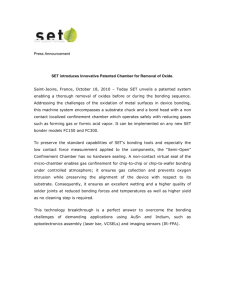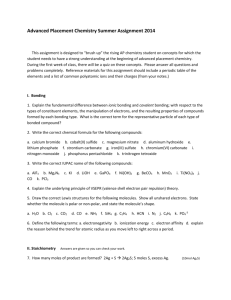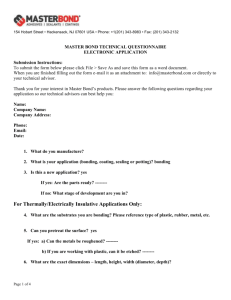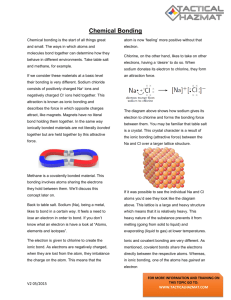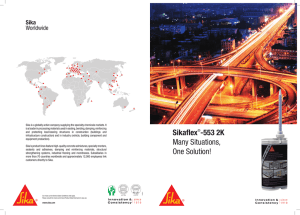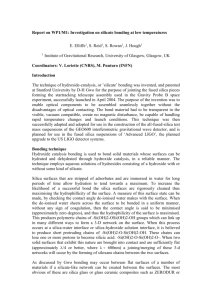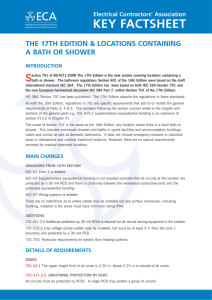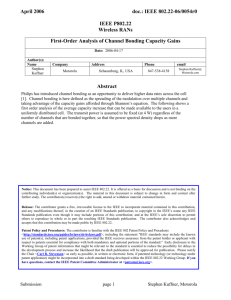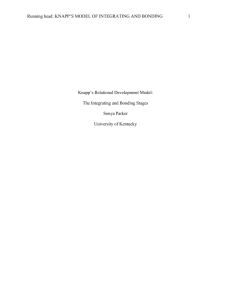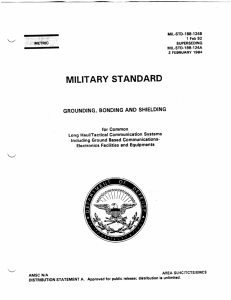Structural Bonding in automotive engineering
advertisement
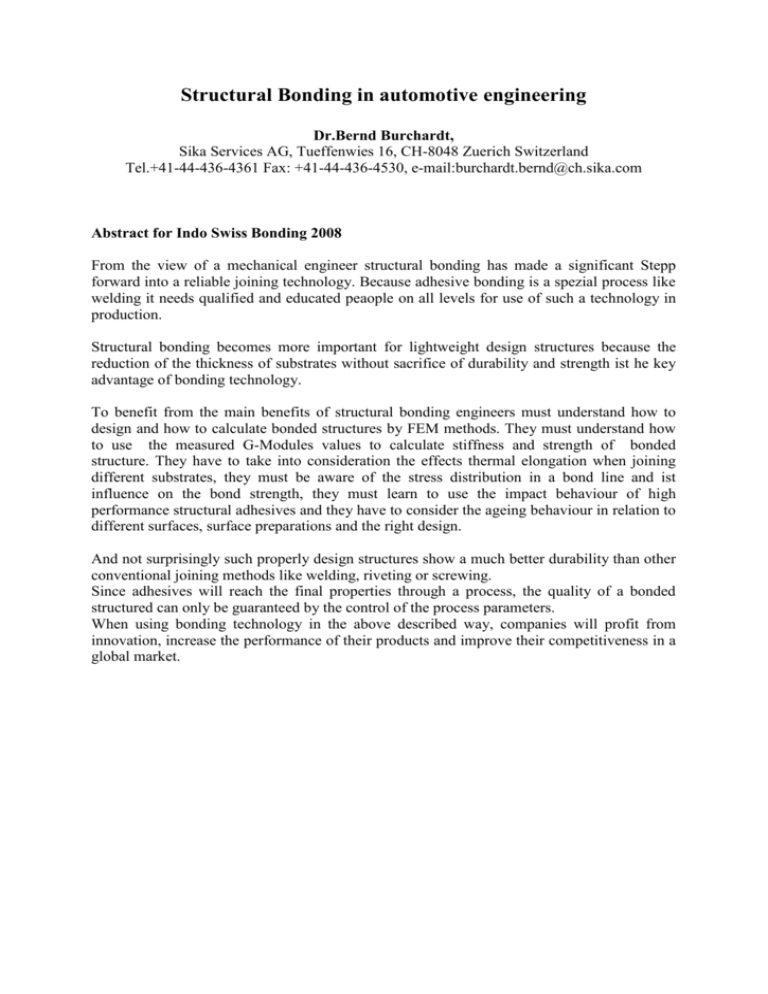
Structural Bonding in automotive engineering Dr.Bernd Burchardt, Sika Services AG, Tueffenwies 16, CH-8048 Zuerich Switzerland Tel.+41-44-436-4361 Fax: +41-44-436-4530, e-mail:burchardt.bernd@ch.sika.com Abstract for Indo Swiss Bonding 2008 From the view of a mechanical engineer structural bonding has made a significant Stepp forward into a reliable joining technology. Because adhesive bonding is a spezial process like welding it needs qualified and educated peaople on all levels for use of such a technology in production. Structural bonding becomes more important for lightweight design structures because the reduction of the thickness of substrates without sacrifice of durability and strength ist he key advantage of bonding technology. To benefit from the main benefits of structural bonding engineers must understand how to design and how to calculate bonded structures by FEM methods. They must understand how to use the measured G-Modules values to calculate stiffness and strength of bonded structure. They have to take into consideration the effects thermal elongation when joining different substrates, they must be aware of the stress distribution in a bond line and ist influence on the bond strength, they must learn to use the impact behaviour of high performance structural adhesives and they have to consider the ageing behaviour in relation to different surfaces, surface preparations and the right design. And not surprisingly such properly design structures show a much better durability than other conventional joining methods like welding, riveting or screwing. Since adhesives will reach the final properties through a process, the quality of a bonded structured can only be guaranteed by the control of the process parameters. When using bonding technology in the above described way, companies will profit from innovation, increase the performance of their products and improve their competitiveness in a global market.


